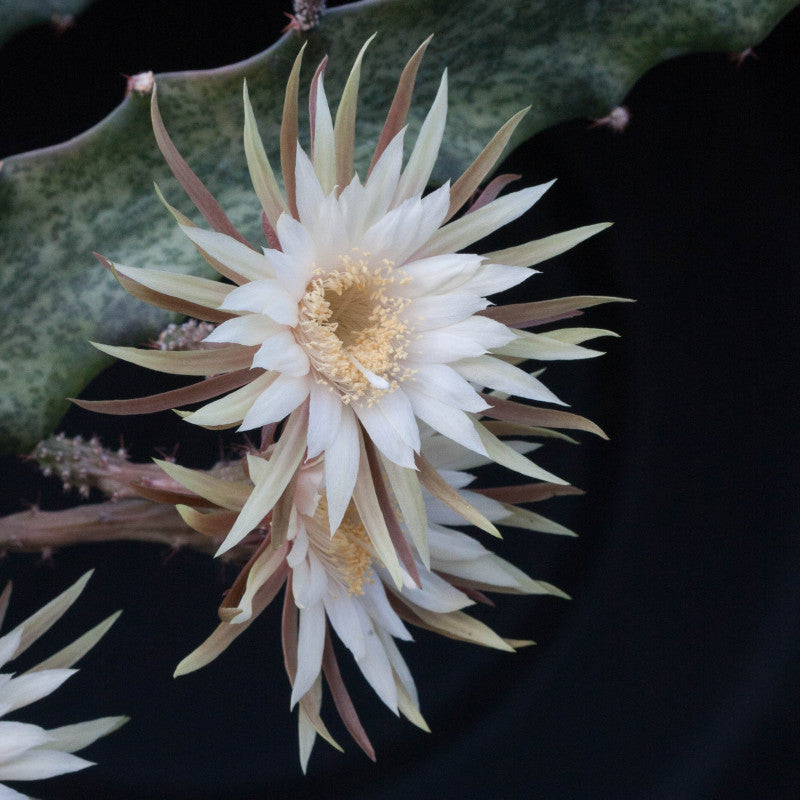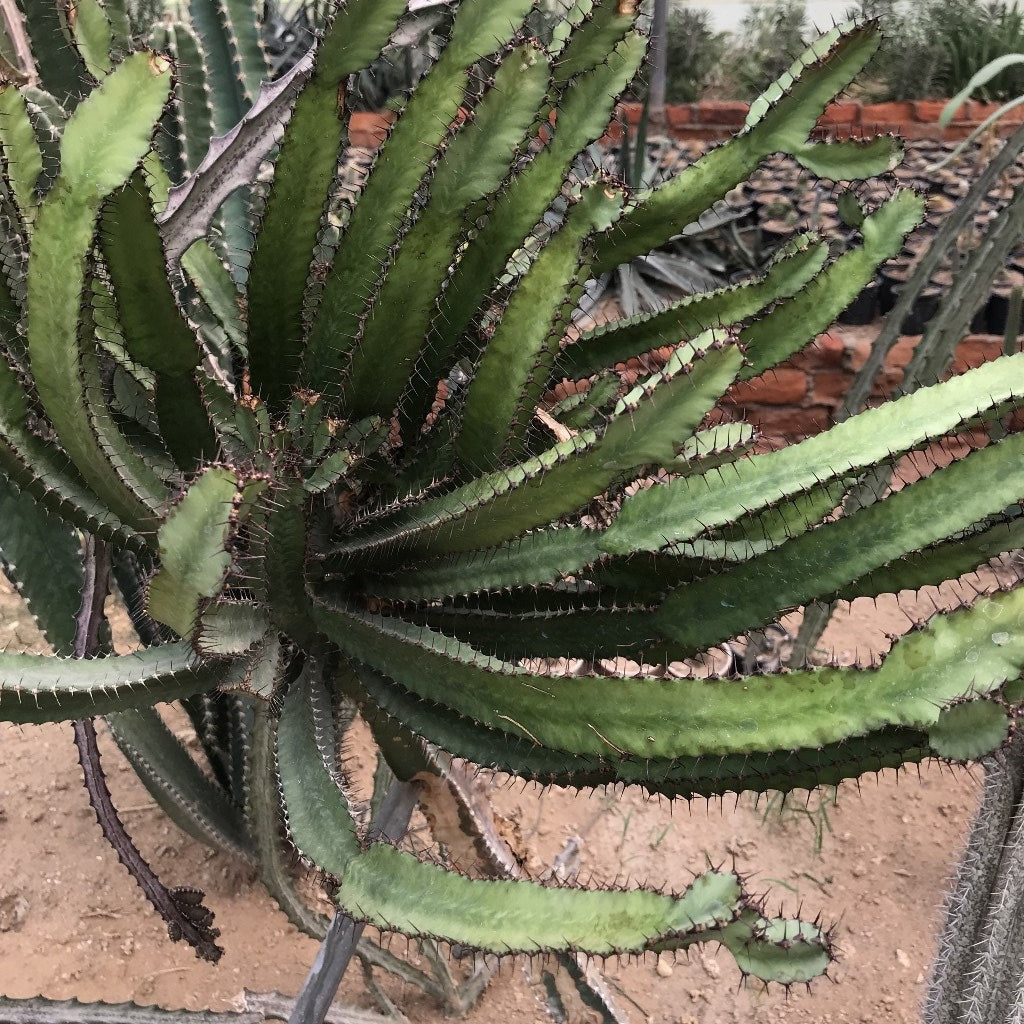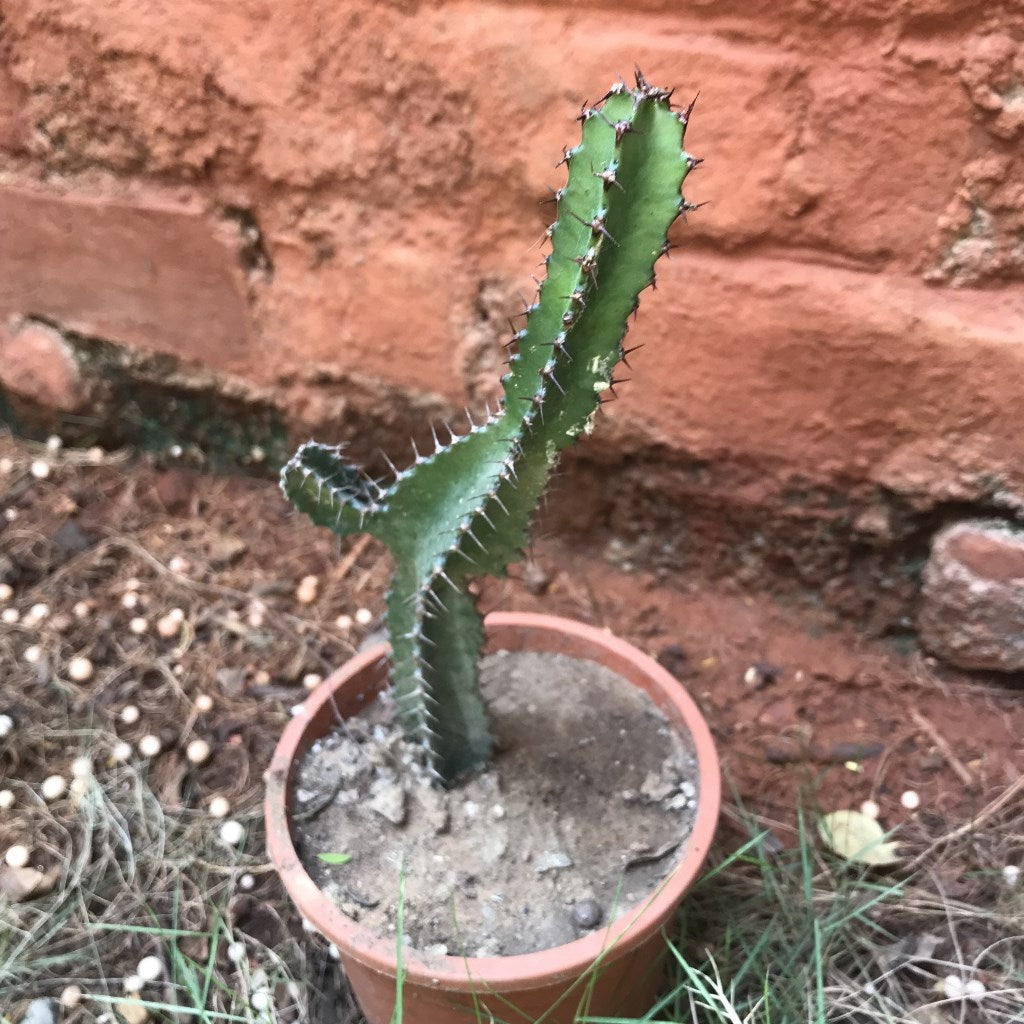Desert night-blooming cereus
Family
Cactaceae
Native
United States & Mexico
Description
Peniocereus is a genus of vine-like, night-blooming cacti.
They have not the typical upright habit of other Cactaceae: they are, usually, vines clinging on other succulent bushes, which provide shade and physical support, with their stems more narrow and less succulent than in most other Cactaceae.
They have a large underground tuber, thin and inconspicuous stems that are cylindrical and reach 2 centimeters of diameter. Usually, they are divided into 6-10, not so pronounced ribs, and are pale green, with a reddish-gryish tinge. The areoles, namely the buds from which spines sprout, are usually whitish and lined up along the ribs. Spines can be small and or absent, like in P. maculatus, or more pronounced, depending on the species. Young stems may be covered in a white fluff.
Peniocereus are famous for their spectacular blooming, which occurs at night. They usually have white or pinkish red, big flowers with numeros, lanceolate petals, arranged in two layers: the upper one facing upwards, and the lower one which is more wide and facing outwards, surrounding a central, abundant bunch of stamens (the stamens are the male reproductive organs of the flowers).
Peniocereus's root is used in traditional medicine to treat diabetes and other diseases.
EnvironmentIt requires an exposure to partial shade, as, in its natural habitat, it’s used to climb on other plants. However, a partially exposed position will do well anyway.It is preferable to keep it at mild temperatures and never below 12-15 °C, for this reason it is recommended to shelter it during the winter period, although it can actually bear temperatures around 0ºC id if its substrate is maintained dry.
Water moderately and only when the soil is completely dry. It is enough to water it once a week in spring and summer, reduce it to once every two months in autumn and to suspend it completely in winter.
A well-draining substrate, rich in mineral nutrients, is an optimal solution. For example, a soil suitable for cacti mixed with pumice, can do well, better if the organic matter is maintained at a rate around 15-20%.It’s important to choose deep, cylindrical pots, to host its big, tuberous roots.Provide your Peniocereus with a structure to which it can cling, as it’s a vine cacti!
They do not need frequent fertilizations, it is enough to dilute fertilizer with watering once a year.
Landscape Uses
Usually these are outdoor plant, grass lands, landscapes.





















